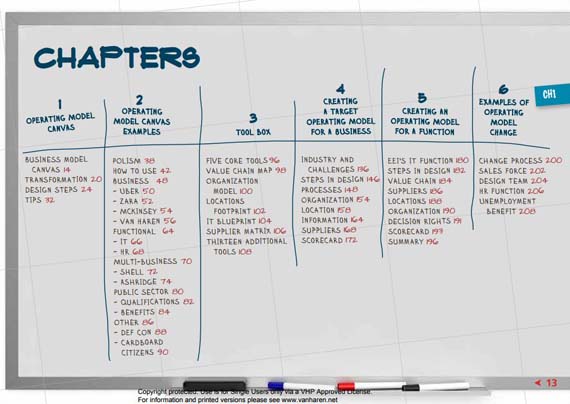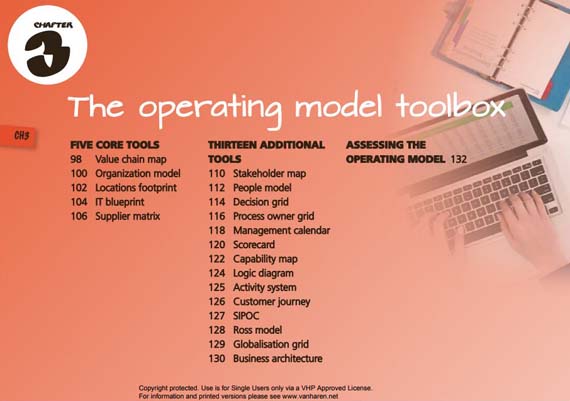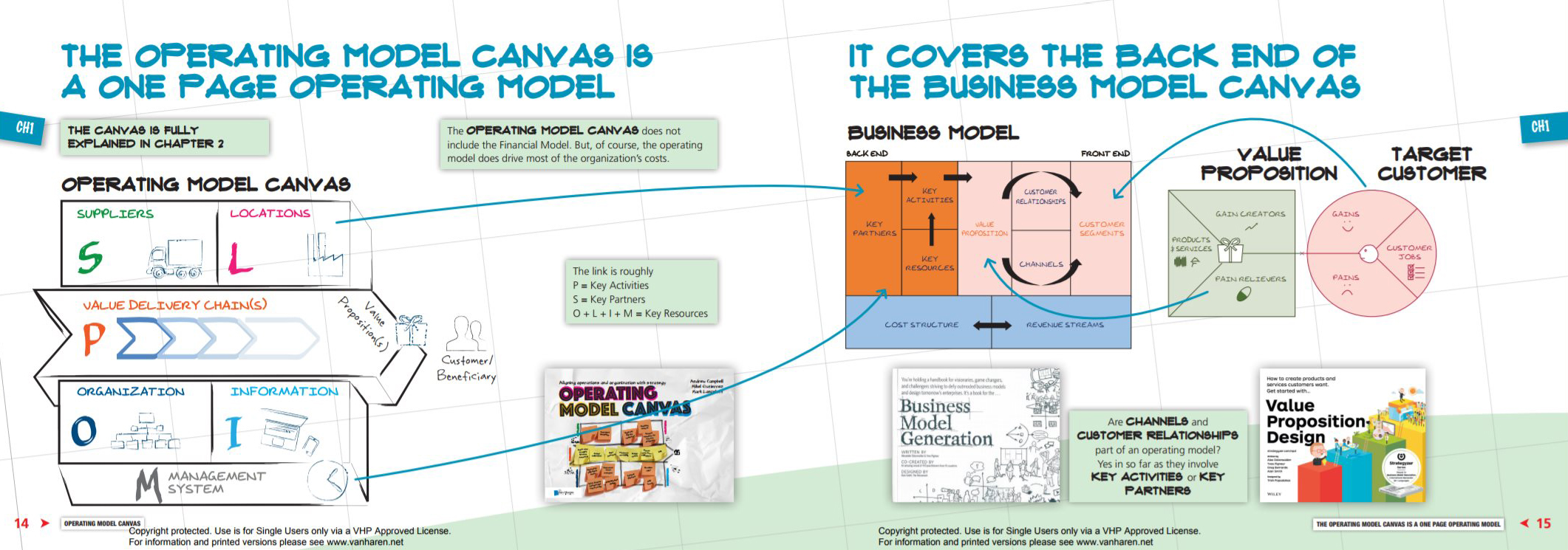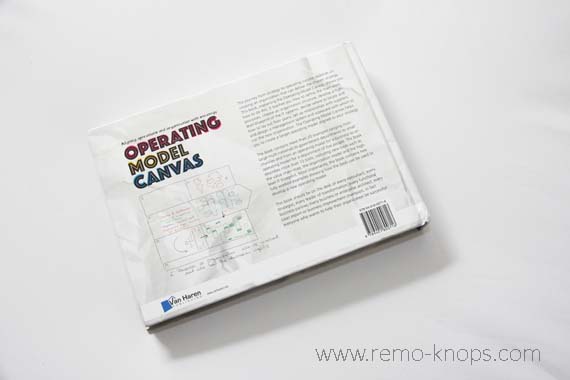Operating Model Canvas – Aligning operations and organization with strategy is the title of the latest book of Andrew Campbell, Mikel Gutierrez, Mark Lancelott. The look and feel is very much like the Business Model Generation handbook from Alexander Osterwalder, Yves Pigneur Alan Smith, Patrick Van der Pijl and Tim Clark.
I this book review I will get you through the Operating Model Canvas book structure, the Operating Model Canvas Toolbox and compare it with the Business Model Canvas and Process Model Canvas. Finally I will give a business analysis view on the Operating Model Canvas.
TABLE OF CONTENTS
Definition Operating Model
I would like to start with a formal definition of an operating model, before I will cover the structure of the book.
“An operating model is a visualization (i.e. model or collection of models, maps, tables and charts) that explains how the organization operates so as to deliver value to its customers or beneficiaries.”
Andrew Campbell has even a more simpler definition: “An operating model is a value delivery chain: a sequence of steps that describe the main work of the organization.” The definitions are from the “What is an operating model?” article on the Operational Excellence Society.
The first operating model definition has a lot of similarities with the Business Model definition from Alexander Osterwalder. In the later sections you will see these similarities perfectly make sense.
Book structure – Operating Model Canvas
The Operating Model Canvas book has a very clear outlined book structure in six chapters below. This high level overview directly shows the mix of theory and application with practical examples.
- Operating Model Canvas;
- Operating Model Canvas – Examples;
- Toolbox;
- Creating a target operating model for a business;
- Creating an operating model for a function;
- Examples of operating model change;
A more detailed overview of the individual book chapters can be seen in the picture below.
The look and feel of the book is very familiar with the Business Model Generation and Value Proposition Design books. Lots graphics and excellent meaningful pictures help to easily consume the contents. I would prefer to call it a workbook. 🙂
Operating Model Canvas Toolbox
Just like the Design a Better Business the Operating Model Canvas comes with a huge set of practical and actionable tools. Roughly 25-30 tools that can be added to your consulting toolbox.
The five ‘core tools’ match with the five core parts of the Operating Model Canvas, while the ‘additional tools’ are additional maps and charts that we or others have found useful.
POLISM = Processes, Organization, Locations, Information, Suppliers, Management System. Rod King “would have preferred use of the acronym, SOMLIP, which starts with suppliers and ends with process” in his review of the book on his LinkedIn Pulse.
No matter of the acronym used, the five core tools are:
- Process / Value chain map;
- Organization model;
- Locations footprint;
- IT blueprint;
- Supplier matrix;
In addition to these core tools, the authors have identified 13 other useful tools that help with designing new operating models for a business. For example think about a stakeholder- and capability map, a process owner or globalization grid a logic diagram or a scorecard. On page 109 you see how the additional tools fit in the different blocks of the operating model canvas.
Operating Model Canvas vs Business Model Canvas
One of the main questions I had when hearing the book title is how the operating model canvas relates to the Business Model canvas from Osterwalder et al.
The answer is fairly simple.
Where the left part of Business Model Canvas describes the operating model in three building blocks (Key Partners, Key Activities, Key Resources), the Operating Model Canvas (OMC) uses five building blocks to describe and innovate the operating model. Roughly you can use the following mapping:
- P = Key Activities;
- S = Key Partners;
- O + L + I + M = Key Resources;
In other words, the Operating Model Canvas is a plugin for the Business Model Canvas that enhances this canvas in multiple ways.
In addition the Value Proposition Design book and its canvas helps you to understand the customer front-end of the business model canvas. So again I would like to emphasize there is family of books and tools that are extremely valuable to innovate (different parts of) your business.
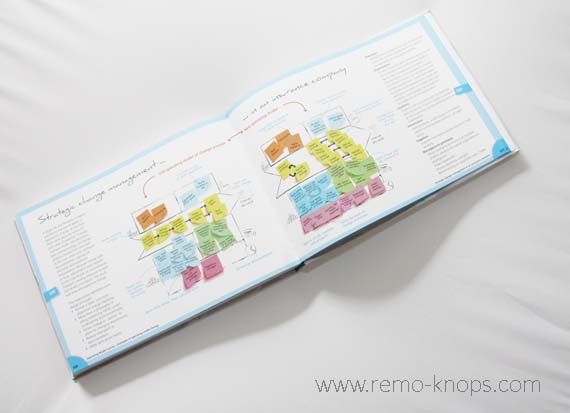
Operating Model Canvas a book for Business Analysts?
Yes, the Operating Model Canvas book is certainly an excellent book for business analysts, although this role is not specifically mentioned as target audience on the “Operating Model Canvas – In 3 minutes” page on the Van Haren Publishing website.
Enterprise Architects and Business Architects are among the targeted roles. From the IIBA “Business Analyst and Enterprise Architect – Cats and dogs ?” knowledge session I’ve learned that Business Analyst- and Enterprise Architect roles have an overlapping area, but are very complementary given their perspective;
In addition I would argue that the Operating Model Canvas toolbox has such an interesting set of tools, that is valuable for business analysts. Stakeholder maps, customer journeys, process owner grids and people models or the capability map are useful tools in the Business Analysis context. More of the models can be mapped against the IIBA Competency Model for Business Analysis.
Operating Model Canvas Course at Ashridge Business School
Ashridge Business School offers a course on Designing Operating Models if you want to gain even more experience from the authors.
“Ashridge Business School is the leading provider of executive education in the UK. The school focuses mainly on short executive courses on topics such as leadership, strategy and organization effectiveness. The school has an executive MBA and a consulting arm.”
Such courses can be extremely valuable.
Looking back … I was fortunate learn directly from some bright people during a number of workshops and business courses. One of the outliners was the Masterclass Corporate Entrepreneurship & Open Innovation with Professor Henry Chesbrough (Berkeley)and Kenneth Morse (MIT).
Concluding thoughts and wrap-up
Andrew Campbell, Mikel Guttierrez, Mark Lancelott have done an excellent job with their book Operating Model Canvas.
Like Patrick van der Pijl summarized in the foreword: “The Operating Model Canvas” perfectly fits into the family of books Business Model Generation, Value Proposition Design, Design a Better Business (and Business Model You!)” All books share an easy to consume format, while having a good mix of scientific roots and practical examples and consultancy models.
I would put it even more black and white. The most value you can gain is from the combination of the books Business Model Generation, Value Proposition Design, Design a Better Business and the Operating Model Canvas.
The Operating Model Canvas is a book for every professional that is interested in business design, business models, business model innovation and entrepreneurship. There is a long list of potential roles that are the intended target audience on the Van Haren Publishing website.
The price-point of the book is around E40,- which is fair for a high quality hardcover version.
The book Operating Model Canvas is published in March 2017 by Van Haren Publishing, who are also in the book as an Operating Model Example. You can order the book directly from the Van Haren Publishing web-shop.
Interested in other reviews and articles, please check out the pages below:

The Operating Model Canvas book and Course on the Ashridge Business School is the work of smart and experienced people. However each of the authors has a different background and work experience that has contributed to an excellent result.
Andrew Campbell
“Andrew Campbell has been a Director of the Ashridge Strategic Management Centre since it was formed in 1987 to research issues concerned with the management of multi-business companies. Before joining Ashridge, Andrew was a Fellow of the Centre for Business Strategy at London Business School. Before that, he spent six years with McKinsey & Co in Los Angeles and London.”
Mikel Gutierrez
“Mikel Gutiérrez is Industrial Projects Director of Gamesa, a company producing wind farms. Previously he was CEO of Asebal, a company producing galvanized steel for road and solar businesses. Before, he was General Manager of Ormazabal Germany and Director of Business Process Improvement of the parent company Ormazabal Group, a producer of equipment for the power industry.”


